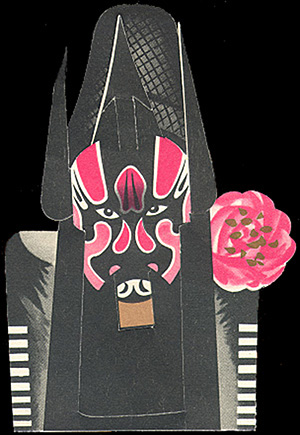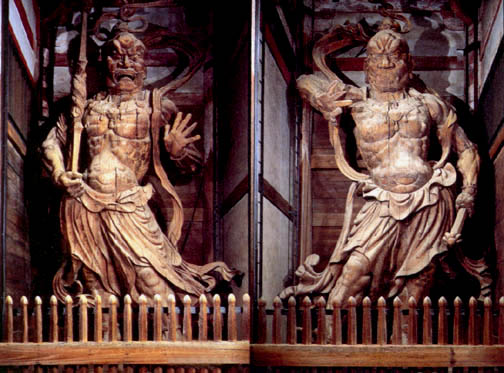Examples of kumadori ("shadow painting"), Kabuki's most distinctive makeup, thought to have been invented by Ichikawa Danjuro I and used mainly in aragoto acting. Heavily theatrical, it emphasizes the facial muscles. Kumadori resembles Peking Opera's face painting (see example below), but the Chinese versions obliterates the actor's own expression, whereas kumadori uses bold symetrical lines to emphasize the face's contours and express emotions growing out of the character's personality. It has also been suggested that the makeup style was influenced by statues of the guardian deities (Niô) and the ferocious Fudô Myôô (see below). Kumadori is fixed for the roles that wear it, and communicates the character's moral quality (good = red, blue = evil), strength, and supernatural abilities.
In the images above, the blue lines (ai guma) of the upper left image indicate an evil character, for example Takehira in Shibaraku. The red lines of the other three images indicate a good character. The upper right is the makeup for Sukeroku (mukimi guma); lower left for Narukami; lower right for Gongorô in Shibaraku (suji guma).

Makeup from the Peking Opera

Buddhist Guardian Deities (Niô)